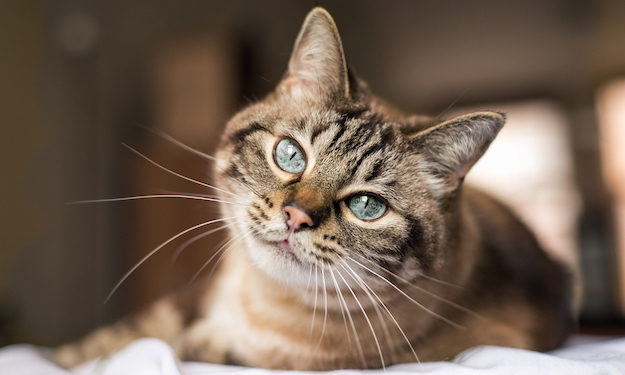Feline Hyperesthesia: Symptoms, Causes & Treatment

What is Feline Hyperesthesia?
Hyperesthesia is an extreme sensitivity in an area of a cat’s skin, almost always on the back, and often in the area right in front of the tail.
Symptoms & Behaviors
Owners often go to pet this area and notice their cat suddenly reacts. The response may be as benign as simply going to scratch the area themselves, or they may become suddenly aggressive and try to bite. Their pupils may become dilated, their skin may ripple, and they may drool. Some cats may vocalize or urinate. While such a response may be unpleasant, the real problems are the potentially self-mutilating behaviors and, of course, the underlying sensations (i.e. discomfort) that cause this behavior.
Diagnosis
To accurately diagnose hyperesthesia, other possible causes for such behavior need to be ruled out. This means looking for any cause of pain in the sensitive area, such as spinal arthritis and skin problems including parasites, allergies, and fungal infections.
Cause & Treatment
The most important thing in cats with hyperesthesia is making sure that there is nothing causing the hyperesthesia that we can identify and treat. This is because there are many disorders that can result in hyperesthesia, however if a cause cannot be identified, we can treat it symptomatically. Gabapentin (a drug frequently used to treat neuropathic pain) works well, but otherwise it depends where they are hyperesthetic.
Anxiety and stress seem to add to a cat’s hyperesthetic reaction, so a treatment plan will often include some behavioral aspects to minimize these. This might include medications to affect behavior and/or establishing a routine to minimize stress associated with change for your cat. Luckily, most cats can be managed and continue to lead happy, active lives!